10am – 7pm
Last admission at 6pm
Average Time Spent: 1.5 hours
en nav_sessionexpired Your session has expired. Please log in again. Confirm
OTP VERIFICATION Select your preferred verification method. Please note that certain countries may have SMS restrictions. If you do not receive an SMS OTP (one-time password), we recommend using email OTP instead. Mobile OTP Email OTP or Try another way VERIFY YOUR MOBILE NUMBER NOW VERIFY YOUR EMAIL ADDRESS NOW An SMS containing a one-time password (OTP) has been sent to your mobile number {#}. An email containing a one-time password (OTP) has been sent to your email address {#}. Your mobile number has been successfully verified. Your email address has been successfully verified. The OTP you have entered is incorrect. Didn't receive OTP? Resend OTP Resend a new OTP in {#} DONE OTP request failed. Please try again later. Duplicate OTP request. Please try again after the existing OTP expires. To verify your account, please complete the hCaptcha below. A one-time password will then be sent to your registered mobile number. To verify your account, please complete the hCaptcha below. A one-time password will then be sent to your registered email address. There is an error sending SMS OTP, we recommend using email OTP instead. Send Email OTP Cancel
15 Your session will expire in Click “Continue” to stay signed in or “Logout” to end your session now. {minute} min {second} sec 2 CONTINUE Log out
Marina Bay Sands Sorry, we are currently unable to connect you to our live chat agent.try again later.Thank you. 30
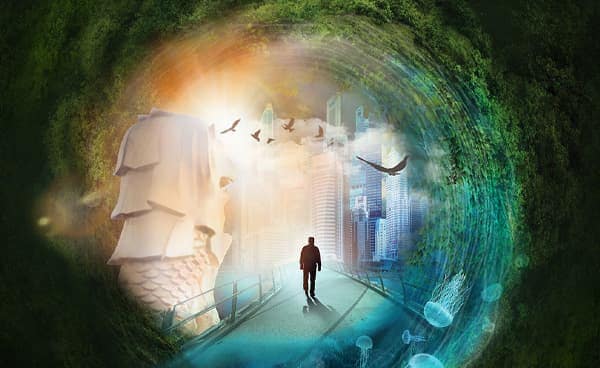
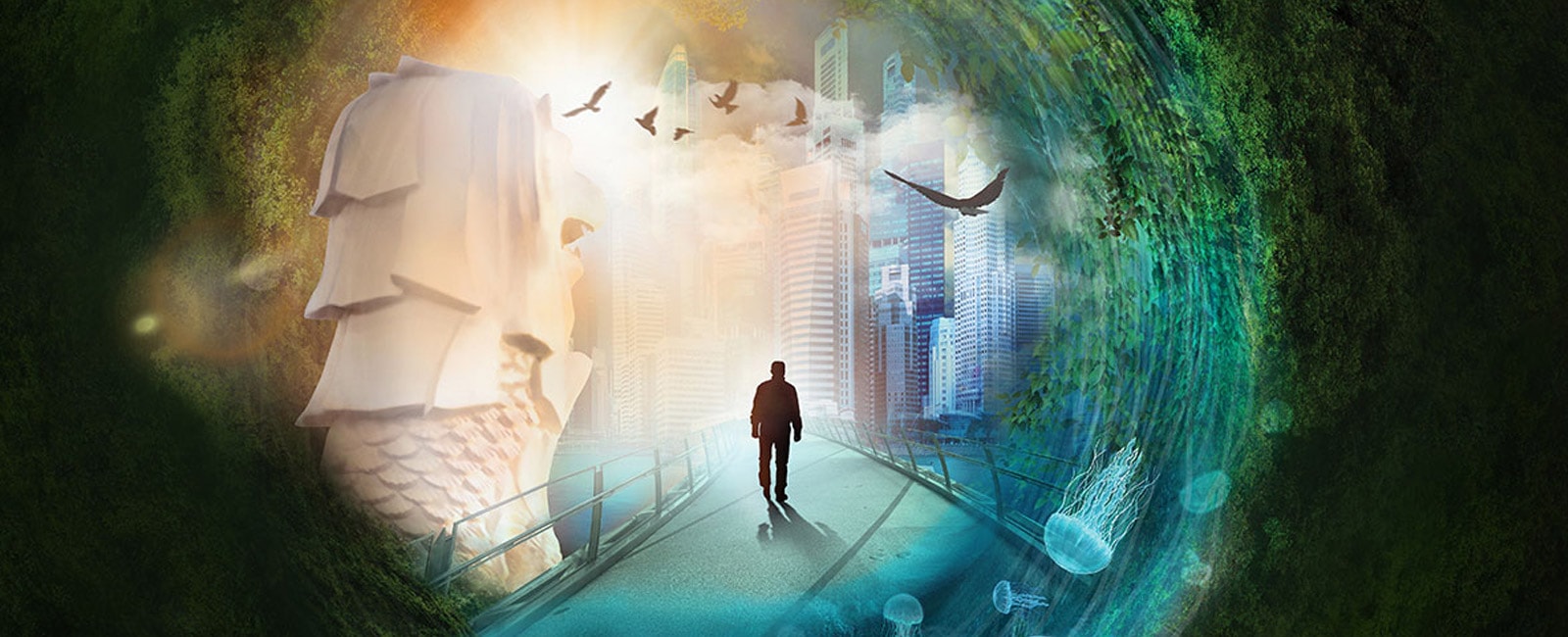
EXHIBITION
Advisory: Some mature content
Please note that the interactive installation win><win by Rimini Protokoll in Act IV will reopen on 4 July.
Inspired by the work of Singaporean writer and poet Alvin Pang, 2219: Futures Imagined marks this year’s Singapore Bicentennial by looking two centuries into the future.
While we cannot be entirely sure what is to come, each section of this exhibition hinges on the scientific certainty that changes in our climate will require us all to adapt. This massive global transformation will act as a backdrop, upon which Singapore’s daily life, communities, cultures and traditions will evolve and change.
Neither a utopian or dystopian view of the distant future and resisting the clichés of science fiction, this exhibition focuses on small, human-scale acts of innovation and contemplation. The exhibition intends for visitors to reflect on what kind of future they want for Singapore, and what actions they may be prepared to take in order to bring that future into being.
Artists featured in this exhibition are as follows:
Alvin Pang (Singapore), John Akomfrah (UK), Sarah Choo Jing (Singapore), Johann Fauzi (Singapore), Hafiz Ozman (Singapore), Superflux (UK), WOHA Architects (Singapore), Debbie Ding (Singapore), Robert Zhao Renhui (Singapore) Finbarr Fallon (Singapore), Donna Ong (Singapore), Lisa Park (USA/Korea), Fyerool Darma (Singapore), Gordon Cheung (UK), Rimini Protokoll (Germany), Bao Songyu (Singapore), Shan Hur (Korea), Larry Achiampong (UK), Zarina Muhammad (Singapore), Amanda Heng (Singapore), Yanyun Chen (Singapore), Priyageetha Dia (Singapore), Adeline Kueh (Singapore), Joshua Ip (Singapore), Clara Chow (Singapore), Rachel Heng (Singapore), Judith Huang (Singapore), Pomeroy Studio (Singapore) and Tristan Jakob-Hoff (New Zealand/UK).
![]() Admission Times
Admission Times
10am – 7pm
Last admission at 6pm
Average Time Spent: 1.5 hours
![]() Ticketed Admission
Ticketed Admission
Singapore Residents
Adult: $16, Child: $12
Tourists:
Adult: $19, Child: $14
Additional ticket options available

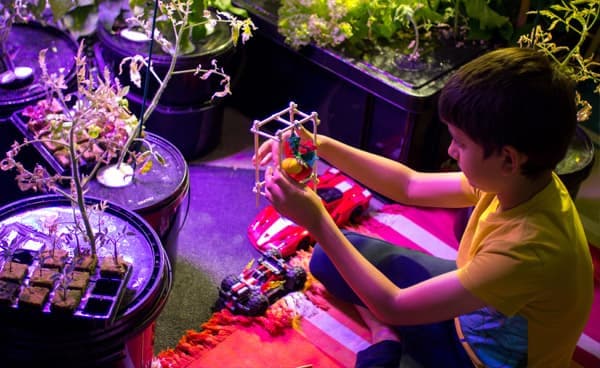





This is a story of a possible future.
The exhibition 2219: Futures Imagined begins in the year 2019, when the repercussions of environmental degradation were increasingly being felt. Governments around the world were making efforts to slow the effects of an impending climate calamity, but to little effect.
The Singapore Government addressed the issue of climate change in its 2019 National Day Rally, prompting a three-pronged approach to tackling climate change — understand, mitigate and adapt.
In the years immediately following 2019, the world continued to undergo extensive change. Whilst technological advancements made the lives of some in society more convenient and interconnected, the earth’s resources were being exploited beyond their capacity.
Humanity’s destructive power over the planet, and its apparent indifference to this grave situation, ushered in an ecological crisis which profoundly affected the course of Singapore’s future.
2019 is remembered as the year of its arrival.
List of artists:
John Akomfrah

In the decades after 2019, triumphs and challenges were experienced across the world and on every continent, as ecological, social and political changes unfolded. By the middle of the 21st century, cities had become more homogenous. Issues were no longer bordered and contained by imaginary national lines — what was experienced in one location had repercussions across the oceans and around the world.
At home, daily life evolved significantly. Living spaces became more self-sustaining as the environment became less able to provide essentials such as food and clean water. Interior design considerations and treasured possessions were set aside to make space for food production in the home.
Whilst the world of the mid-21st century differed greatly from the decades that preceded it, in Singapore, the familiarity of public housing, shared communal spaces, a fascination with nature and a continued interest in local issues remained. Being highly adaptable, many Singaporeans were able to make the necessary adjustments needed to survive on a changing planet.
List of artists:
Debbie Ding, Hafiz Osman, Johann M Fauzi, Robert Zhao Renhui, Sarah Choo Jing,
Superflux, WOHA

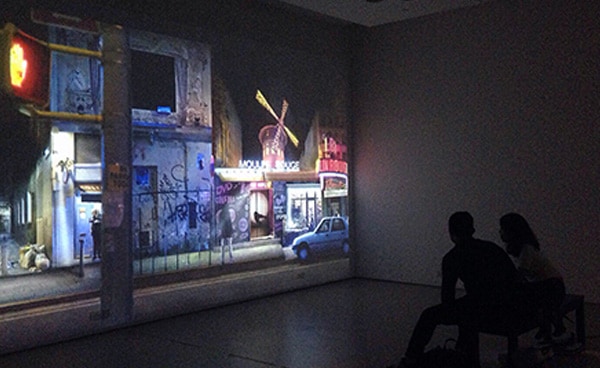

By 2060, living conditions on the Earth’s surface had taken a turn for the worse. The environment was no longer suitable for human societies. Life migrated underground.
Having made significant progress in exploring beneath the surface, Singapore was well-placed to move its citizens into a subterranean environment. The propositions of Singapore-based architect Finbarr Fallon provided a template for underground life, and by 2065, Singapore was ready to mark its centennial year of independence below ground.
However, not all things could be transported below. Underground cities had limited sunlight to sustain plants and animals, and over time nature became rarefied. Artificial shrines acted as memento mori to the rich flora and fauna of the past.
As the relationship between people and nature became less tangible, these synthetic sanctuaries gained value as a means of healing and offered spaces where deep connections could be forged.
List of artists:
Alvin Pang, Donna Ong, Finbarr Fallon, Fyerool Darma, Gordon Cheung, Lisa Park

Subterranean Singapore 2065, 2017 by Finbarr Fallon (Singapore/UK)

Interactive installation with sensors, video and sound.
Please note, in light of safe management measures, this artwork will be available for viewing, but will be temporarily unavailable for public interaction.

By 2119, sea levels had risen significantly around the world, inundating many coastal cities and forcing communities and societies to adopt dramatically different ways of living.
Humanity’s global technological infrastructure was disintegrating due to increasingly severe environmental challenges, leading to fragmented social and political systems. The sea became the primary geological feature on the planet. Adapting to an increasingly oceanic world became critical for survival.
By the early 22nd century, the impact of climate change on the temperature and chemistry of marine ecosystems was striking. As the sea acidified and warmed, it became an ideal habitat for one particular species — jellyfish. An immersive installation by Rimini Protokoll provides an insight into the era when jellyfish became the dominant species on earth. The minority species, humans, recall a time when their ancestors attempted to prevent this eventuality.
List of artists:
Bao Songyu, Rimini Protocol

Interactive installation with live jellyfish and sound, installation view CCCB, Barcelona. Photography by Martí E. Berenguer.win > < win.
Please note that this artwork will reopen on 4 July.

Here and now, the 23rd century begins and after a long period of humanity’s absence, the environment on the surface of the Earth has begun a process of regeneration.
As populations return to the surface, many cultures are beginning to find unusual and surprising archeological objects that were once left behind. As historical relics are recovered and their meanings deciphered, stories passed down through generations are starting to make sense again. In many places around the world, these artifacts are the foundations upon which society is being rebuilt.
In 2219 as Singapore prepares to commemorate 400 years of national history — its Quadricentennial — it is rediscovering the strength of its own collective memory. Traditions that endured through the worst years of ecological calamity, such as ancestral customs, domestic crafts and rituals are being practiced again. It is clear that what endures through the centuries is not technology and infrastructure, but cultural traditions that are passed down within the family from one generation to another.
The stories we tell, the art we make, the prayers we offer, the rituals we repeat — these are the intimate legacies of our past, which we take with us into our future.
List of artists:
Adeline Kueh, Amanda Heng, Chen Yanyun, Lary Achiampong, Priyageetha Dia, Shan Hur, Zarina Muhammad




At the heart of 2219: Futures Imagined is The Library of Necessary Books. From literary cannon to DIY manuals of utilitarian know-how, The Library of Necessary Books is a collection of books that have been lovingly handed down from generation to generation, from the past into the future.
Visitors are invited to submit books to the Library for display in the exhibition. The Library accepts donations of books that may hold a special meaning to visitors, or books that donors deem important for future generations of Singaporeans. When they make their book submission, donors are encouraged to write a message that they would like to convey to the Library users of the future.
The Librarian of Necessary Books will take receipt of the books in special sessions at ArtScience Museum, and the Librarian will curate a selection for display in the exhibition.
Book Donation details
Dates: Every first Saturday of the month during the run of the exhibition
Time: 12pm – 2pm
The Library of Necessary Books also features a permanent display of short stories written by classical Singaporean authors of this period, such as Alvin Pang, Clara Chow, Rachel Heng, Judith Huang and Joshua Ip.

In the future, tall or double-storey bikes may become a popular mode of transport in cities affected by the rising sea levels. How else might we navigate flooded roads and highways?
Artist Hafiz Osman’s tall bike, titled Penghulu, is part of 2219: Futures Imagined exhibition. Members of the public at the October edition of SG Car Free Weekend had the opportunity to try riding on the tall bike.
Insert video


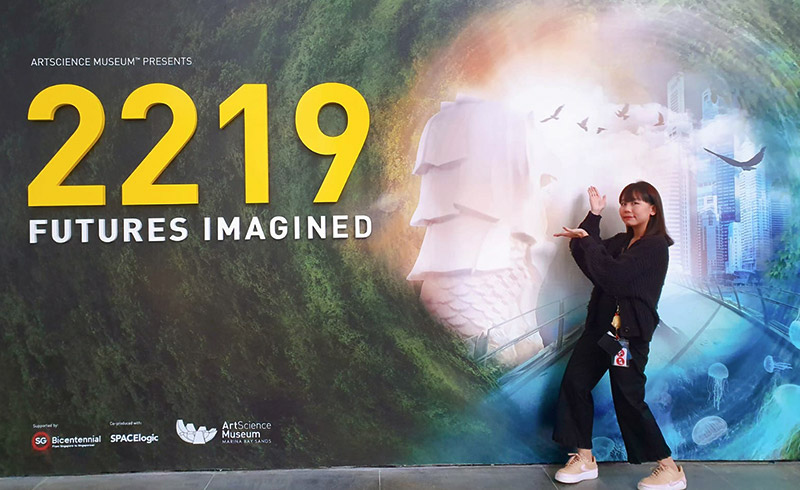

Young visitors are invited to imagine that they find themselves in the distant future with very little memory of how they got there. Using a mysterious folder of fragments of clues and riddles as well as hints trailed throughout the exhibition, they get to piece together the story of how the future came to be.
The interactive trail is accompanied by a downloadable guide that contains extra information such as the objective and outcome based on the respective trail stops.
The trail kit is available for purchase at our Museum Retail shop for S$5. Recommended for children 12 years and above.